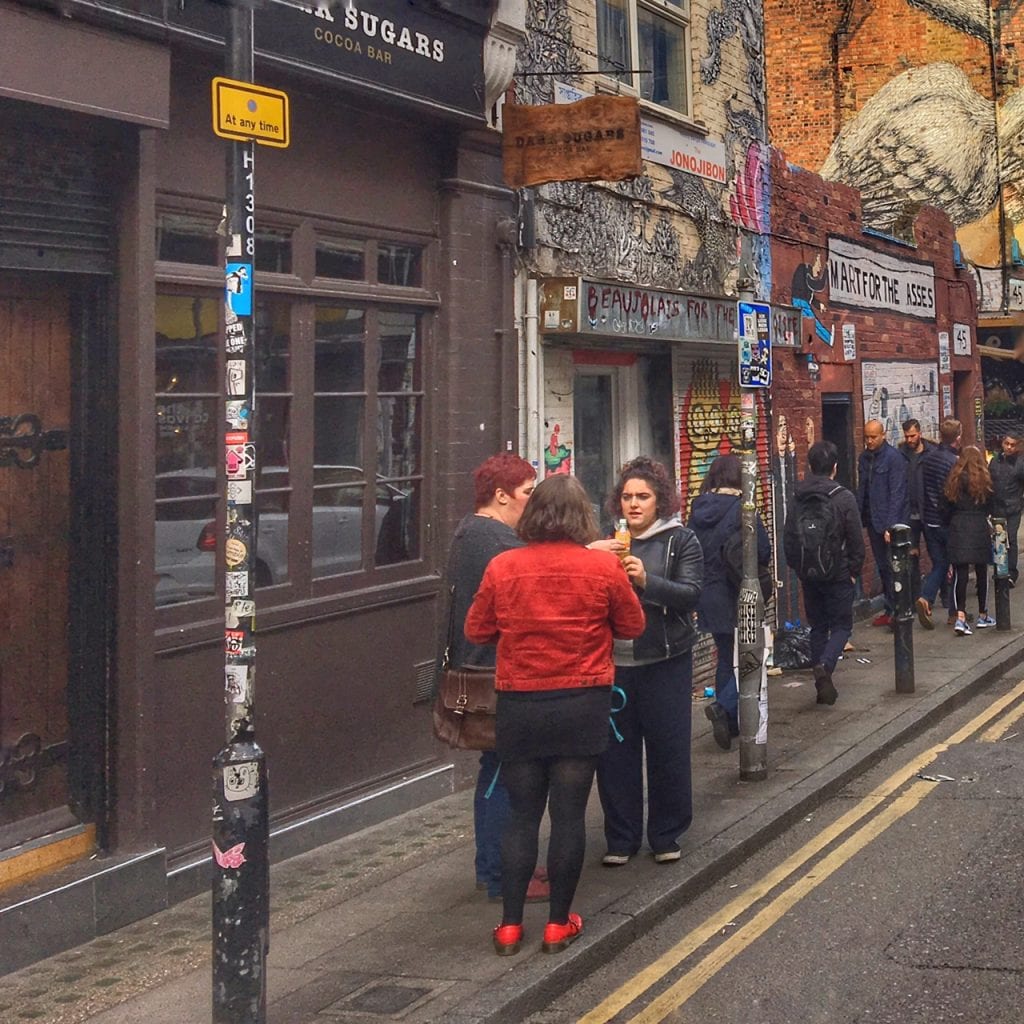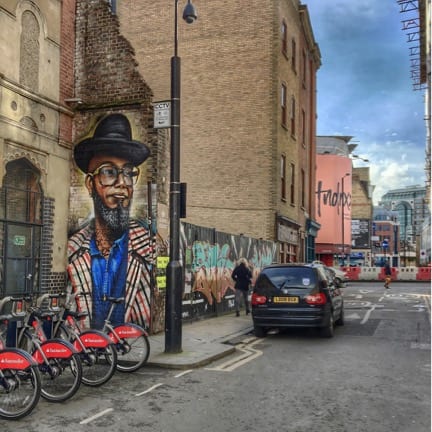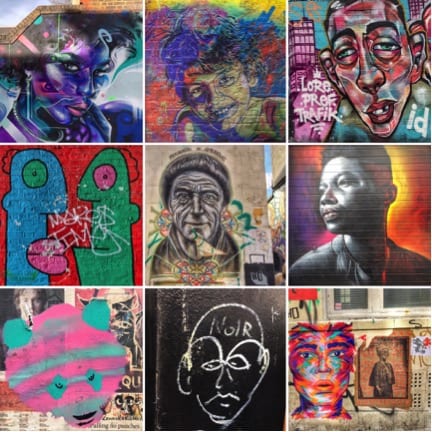On a recent business trip to Europe, I had the good fortune of meeting up with some of my favorite colleagues. A group of us happened to be free one Saturday and someone suggested we go on a Street Art Tour in London’s East End. Spending the afternoon outside, exploring the city? I was in.
My eagerness dropped slightly when the tour began at a street pole covered in stickers. Stickers? Was this really what we were pausing to see?
And it was then that the magic began…

Esther, our tour guide, began talking in excited tones, waving her hands as she told colorful stories about the artists behind these stickers in vivid detail. With a slap of her right hand behind her back, she acted out how they would discretely affix their sticker on the pole.
As she passionately told her stories I learned that “stickering” is in fact a form of street art – marking one’s territory, making a public statement about the times we live in, sharing one’s art without the high stakes risk that comes with some of the larger pieces of unsanctioned street art. Huh. I had no idea. I don’t think I’ll ever look at what appears to be a misplaced sticker in quite the same way.
Her stories continued as we slowly moved our way up and down streets, stopping to look at pieces by some famous artists like Shepard Fairey, who is known for producing the “Hope” poster of Barack Obama during the 2008 presidential campaign, along with some who remain relatively unknown, though their art is seen by millions of passersby.
We saw work that was sanctioned and work that was made in the middle of the night. We learned about the magic of layering where a piece gets covered in part by the work of other artists, heard stories about arguments between artists and viewed a variety of techniques – from spray paint that creates dots, dashes and drips, to bronze pieces that sit on top of poles (Jonesy), and polyurethane foam sculptures placed on roofs (Christiaan Nagel).
We saw colorful portraits by artists like Manyoly and Mr Cenz, typeface words and abstract signs by artists who come to London from all over the world to create art, ensuring their voice is heard.

The four-hour tour flew by. It made me pause and wonder why? Sure, the company I was with was a major bonus, but what I realized was that the majority of my engagement came from the power of Esther’s stories. Her deep knowledge gave us an insider’s view on street art and her personal passion brought the pieces to life. It was something that couldn’t be replicated by reading a book or touring on your own.
Also powerful were the stunning street art pieces themselves. As I studied one, I would have an emotional response to the statement it was making. And when I was done, I would get excited to find the next piece, to examine it and to feel connected to it! And isn’t that what we want to accomplish in today’s world – communicate and create content that causes an emotional reaction? That causes the viewer to stop and engage?
And finally, perhaps what pulled me in so completely was the power of taking it to the streets. You get to see the pieces in context, hear the stories, feel the buzz of the neighborhood, enjoy good company and just experience art in a way that you could never do if you stayed inside.




